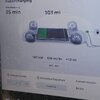That doesn't line up with what you quoted from the Federal Register:The above seems to indicate as long as your station is above 600 kW total, you would be fine, so the issues brought up by @MP3Mike would not be an issue if that were the case. That would be more in line with how other federal standards are done (for example subsidized broadband, the speeds may be lower when there is higher congestion).
(d) Power level. (1) Maximum power per DCFC charging port must be at or above 150 kilowatt (kW). Each charging station must be capable of providing at least 150 kW per charging port simultaneously across all charging ports. DCFC must supply power according to an EV's power delivery request up to 150 kW. DCFC may participate in smart charge management programs so long as each charging port continues to meet an Electric Vehicle's request for power up to 150 kW.
It also mentions that the smart charge management must always provide at least 150kW if the car requests it.
Didn't you link to it? The Federal Register is the official requirements.I couldn't find the actual law section, so really it comes down to how the actual wording in the law says. If someone has a direct link, please post.
And it seems that Tesla MagicDock idea wouldn't comply:
c) Connector type. All non-proprietary charging connectors must meet applicable industry standards. Each DCFC charging port must have a permanently attached Combined Charging System (CCS) Type 1 connector and must charge any CCS-compliant vehicle.
Well, unless of course the cable has the CCS1 connector on it and the MagicDock adapter converts it to the Tesla connector. (Which I doubt they would do.)



